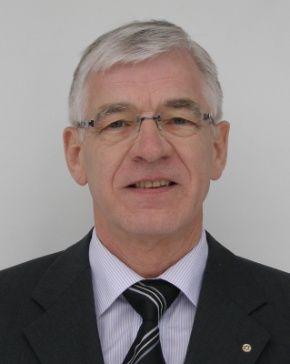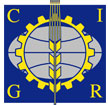Civility:
- Prof.
Name:
Last name:
Email:
Telephone (office):
Country:
Affiliation:
Biography:
Education
- 1971 Ph. D., The Royal Veterinary and Agricultural University Denmark. Thesis: Draught Force Requirements of Ploughs.
- 1965 M.Sc. agr., The Royal Veterinary and Agricultural University, Denmark.
Experience
- 1978 - Head of Section at Department of Agricultural Engineering, Research Centre Bygholm, Denmark.
- 1971-78 Assistant at the Danish Building Research Institute, H?rsholm, Denmark.
- 1968-71 Ph.D. student at The Royal Veterinary and Agricultural University, Denmark.
- 1967-68 Assistant at Institute of Agricultural Engineering, The Royal Veterinary and Agricultural University, Denmark.
- 1965-67 Assistant at Department for Work Studies at the Agricultural Rationalization Fund, ?rritslevg?rd, Otterup, Denmark.
Honary offices
- 2007-2012 Member of CIGR's presidium. Incoming president 2007-08, president 2009-10 and past president 2011-2012.
- 1989-2006 Member of the Board of CIGR, Section II, Farm Buildings, Equipment, Structu-res, and Environment. Secretary 1989-2002 and Chairman 2003-2006.
- 1984-99 Member of the Board of NJF (Nordic Association of Agricultural Scientists) Section VII, Secretary 1984-87 and Chairman 1988-91.
- 1982-84 Chairman for the Committee regarding Danish Standard DS 6039, Ventilation systems for livestock buildings.
- 1972-99 Censor at the Royal Veterinary and Agricultural University from 1972 and later on also at University of Aalborg and the Engineering College in Horsens.
- 1974- Censor at Ph.D. papers and thesis.
Others
- 2003 Responsible for a CIGR Symposium on Gaseous and Odour Emission from Animal Production Facilities.
- 1999 Responsible for CIGR Symposium Dust Control in Animal Production Facilities.
- 1992-1999 Contribution to the evaluation of EU projects under the FAIR programme.
- 1992-96 Danish member of the coordination group of the EU project "Reduction of Aerial Pollutant Emissions in and from Livestock Buildings".
- 1991-2007 Co-author of the text book "Klimateknik i Landbruget" (Climate engineering in agriculture).
- 1983-90 Participated in activities regarding energy projects in agriculture. Among these been editor and main contributor of the book: "Energy Conservation in Animal Houses" FAO 1990.
- 1977- Has since 1977 been member of the working group "Climatization of Animal Houses" under CIGR.
- 2005 Appointed Honorary Doctorate by the Swedish Agricultural University.
- 1965-2015 Published around 300 scientific articles.
Own research
Back in the seventies there were no international guidelines for calculations on indoor climate in animal houses. Each country had its own calculation methods, why a group of leaders at research institutes and universities, in the field of Agricultural Building, decided in 1976 at a CIGR mee-ting, to create a working group on Climatization of Animal Houses. The working group held its first meeting in 1977 in Switzerland, and consisted of 11 scientists from 11 European countries and some corresponding overseas members. CIGR was not yet real internationally in scope at that time. S?ren Pedersen was appointed as the Danish member and was for him the start of nearly four decades of international work on Climatization of animal houses and it has brought S?ren Pedersen around to several international symposiums, conferences and congresses. His first Congress was in Budapest in 1984, where Hungarian, Russian German, French and English were official languages, with simultaneously interpretation.
It was expected that the work in the above mentioned working group, should be finished in two year time, but due to several obstacles it took the time until 1984 to finish the first report. E.g. the first draft in 1977 was elaborated in German language, illustrating that it was not clear at that time that the international conference languages would be English. Furthermore it was a hard work to come to a common agreement on animal heat and moisture production, based on 11 different national standards.
The employment of the calculation rules in the 1984 report shoved good agreement with praxis on a 24 hour basis, but it was evident, that in some cases there could be big deviations during the 24 hour cycle, due to e.g. animal activity. Unfortunately no equipment was available for measuring animal activity, why S?ren Pedersen developed an equipment based on Passive Infrared Detectors. The measurement shoved that most of the diurnal variation in animal heat and moisture production could be explained by diurnal variations in animal activity. This measuring principle was thereafter taken into use at several European universities. The method was published in 1995 and followed by a number of articles. Besides the impact of animal activity, also the digestion of feed contributes to the total animal heat production. Therefore Pedersen et al., included the digestion into the model, published as: The Influence of diurnal variation in animal activity and digestion on animal heat production, Agric Eng Int: CIGR Journal, Special Issue, May 2015.
Photo:

